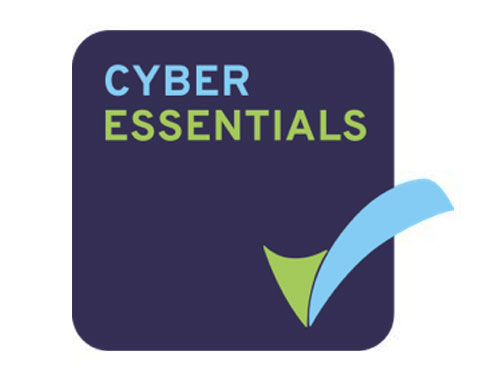
More than 200,000 organizations and 190 million people use Microsoft SharePoint—a mobile, intelligent intranet service—for intranets, team sites and content management.
As the benefits of digital transformation prompt more businesses to turn to the cloud to store their data and promote communication between their teams, that number is likely to continue to climb in the near future, and of course, more SharePoint users is great news for SharePoint administrators.
Although it’s largely employed as a document management and intranet platform, there are almost innumerable things you can do with SharePoint—if you know how.

What does a SharePoint administrator do?
Its massive scalability and customization options mean SharePoint can solve a lot of pain points for organizations, but getting the most out of the solution means having someone on hand who has skills, knowledge, and experience.
IT professionals in the Microsoft ecosystem know how important a SharePoint Administrator can be to an organization. These admins assist companies and organizations in achieving the full potential of the powerful SharePoint platform.
The duties of a SharePoint Administrator include administering, configuring and updating a company’s SharePoint platform, along with managing the platform’s system and services day-to-day, and training other users on how to effectively utilize the platform and the data within it. Sometimes, a SharePoint admin will manage the SQL Server, a database that works in conjunction with SharePoint.

SharePoint administrator certifications
So how do you go about becoming a SharePoint Administrator? Obviously, it’s imperative that you fully understand how SharePoint works, and the best way to exhibit that understanding is to become certified.
Microsoft has recently rebranded its suite of business apps, and with that revamp came a lot of changes to its certification structure.
The company is seeking to align its certification paths with newer offerings like Microsoft 365 and reflect the way that many tech professionals work today, often with several overlapping technologies at a time. That change in direction has seen some of the more product-specific certifications that covered SharePoint—like MCSA: Office 365—shelved.
There are currently no SharePoint-focused certifications available to earn. All SharePoint Server-related certifications and exams have also been retired, with certifications such as Microsoft Office Specialist 2013 Master pathway now omitting the elective SharePoint exams.
These changes have significantly narrowed the options for SharePoint professionals and those looking to validate their SharePoint skills. However, there is still one certification that features SharePoint.
Ready to take your career to the next level?
Check out our latest Microsoft technology job roles and make your move.
Microsoft Certified: Information Protection Administrator Associate certification
The Microsoft Certified: Information Protection Administrator Associate certification is a multi-technology-focused badge covering many platforms and services that sit under the Microsoft 365 umbrella. Concentrated on data security, the certification validates the holder’s understanding of organization information protection and governance procedures, and their ability to translate business requirements into technical solutions that secure data across various platforms.
The accreditation is recommended for Administrators, Information Protection Administrators, Risk Practitioners, and Security Engineers.
The Microsoft Certified: Information Protection Administrator Associate exam
To earn this certification, budding Admins must pass exam SC-400: Microsoft Information Protection Administrator.
Microsoft advises that candidates should have considerable experience with Microsoft 365 services. Here are the topic areas that the exam covers:
- Implement information protection (35–40%)
- Implement data loss prevention (30–35%)
- Implement information governance (25–30%)
You’ll need to score 700 or higher to pass the exam. If you want to test your knowledge before exam day, you can get access to practice tests online.
What you need to know to become a Microsoft Certified: Information Protection Administrator Associate
There’s no guarantee that everything below will be covered in the exams for this certification—or that topics not included in this list won’t crop up—but this list should give you a good idea of the kind of things you’ll need to know to earn this accreditation.
Implement information protection (35–40%)
Create and manage sensitive information types
- Plan for sensitive information types
- Select a sensitive information type based on an organization’s requirements
- Create and manage custom sensitive information types
- Create custom sensitive information types with exact data match
Create and manage trainable classifiers
- Identify when to use trainable classifiers
- Design and create a trainable classifier
- Test a trainable classifier
- Retrain a classifier
Implement and manage sensitivity labels
- Design and implement roles and permissions for administering sensitivity labels
- Design and create sensitivity labels
- Configure and manage sensitivity label policies
- Apply sensitivity labels to Microsoft Teams, Microsoft 365 groups, Microsoft Power BI, and Microsoft SharePoint sites
- Configure and publish auto-labeling policies
- Monitor data classification and label usage by using label analytics tools such as Content explorer and Activity explorer
- Apply bulk classification to on-premises data by using the AIP unified labeling scanner
- Manage protection settings and marking for applied sensitivity labels
- Administer reporting, tracking, and access of sensitivity labels and protected content
- Create or extend existing sensitivity labels to Microsoft Purview
- Design an email encryption solution based on methods available in Microsoft 365
- Implement Microsoft Purview Message Encryption
- Implement Microsoft Purview Advanced Message Encryption
Implement data loss prevention (30–35%)
Create and configure data loss prevention (DLP) policies
- configure user profile properties
- archive or delete unused artifacts
- plan for Information Rights Management
- modify storage limits for SharePoint Online
Implement and monitor Microsoft Endpoint DLP
- Create and maintain DLP policies for endpoints
- Configure endpoint DLP settings
- Specify a deployment method for device onboarding
- Identify endpoint requirements for device onboarding
- Monitor endpoint activities
- Implement Microsoft Purview Extension
Analyze and respond to data loss prevention policies and activities
- Analyze data loss prevention reports
- Analyze data loss prevention activities by using Activity explorer
- Remediate data loss prevention policy violations in the Microsoft Purview compliance portal
- Remediate data loss prevention violations in Microsoft Defender for Cloud Apps
Implement information governance (25–30%)
Retain and delete data by using retention labels
- Plan for information retention and disposition by using retention labels
- Create retention labels
- Configure and manage adaptive scopes
- Configure and publish retention label policies
- Configure and publish auto-apply label policies
Manage data retention in Microsoft 365
- Create and apply retention policies for Microsoft SharePoint Online and OneDrive
- Create and apply retention policies for Microsoft Teams
- Configure preservation locks
- Recover retained content in Microsoft 365
- Implement retention policies and tags in Microsoft Exchange Online
- Apply mailbox holds in Microsoft Exchange Online
- Implement Microsoft Exchange Online archiving policies
Implement records management in Microsoft 365
- Plan for records management
- Configure labels for records management
- Manage retention requirements with a file plan
- Configure automatic retention using file plan descriptors
- Classify records using retention labels and policies
- Implement in-place records management in Microsoft SharePoint Online
- Manage event-based retention
- Manage disposition of records

Studying for your Microsoft Certified: Information Protection Administrator Associate certification
As well as taking part instructor-led classes, there are also self-paced online learning paths for this specific exam.
- SC-400: Implement Information Protection in Microsoft 365 (8 Modules)
- SC-400: Implement Data Loss Prevention (3 Modules)
- SC-400: Implement Data Lifecycle and Records Management (3 Modules)
Burgeoning Admins should also check out the huge library of documentation available to dig into and help you prepare.
- Microsoft 365 security documentation
- Microsoft 365 Zero Trust deployment plan
- Microsoft Purview compliance documentation
- Microsoft 365 Defender documentation
- Learn about data loss prevention (DLP)
- Microsoft 365 for enterprise documentation and resources
Renewing your Microsoft Certified: Information Protection Administrator Associate certification
Microsoft associate, expert, and specialty certifications expire annually. You can renew by passing a free online assessment on Microsoft Learn.

SharePoint certification pricing
Microsoft exams typically cost $165 USD per attempt.
So, if you wanted to earn the Microsoft Certified: Information Protection Administrator Associate certification, which requires you to pass one exams, it would cost you $165 USD if you hadn’t already passed Exam 70-339, and $264 USD ($165 USD + $99 USD) if you had.
If you don’t pass the first time, you’ll have to pay for the exam again. The good news is that Microsoft provides several exam packages that offer cheaper resits.
The Exam Replay package costs $230 USD, and includes one certification exam, plus a retake. Your other option is the Exam Replay with Practice Test, which includes one certification exam, one retake, and access to one official Microsoft practice test. This package costs $265 USD.
Are SharePoint certifications worth it?
The process of earning a certification as a SharePoint Administrator may involve a lot of time, and a lot of studying, but at the end of your hard work you get a highly respected and sought-after award that will help you stand out in the competitive Microsoft specialist job market.
SharePoint skills are in demand, and if you can prove that you possess the abilities that employers are looking for, you can make a good living as a SharePoint Administrator; depending on experience, salaries can often reach upwards of $100,000, with those going on to SharePoint Architect or Developer roles achieving up to $150,000.
The hottest new Microsoft jobs straight to your inbox.
Get the latest hand-picked Microsoft roles via our jobs by email service.



